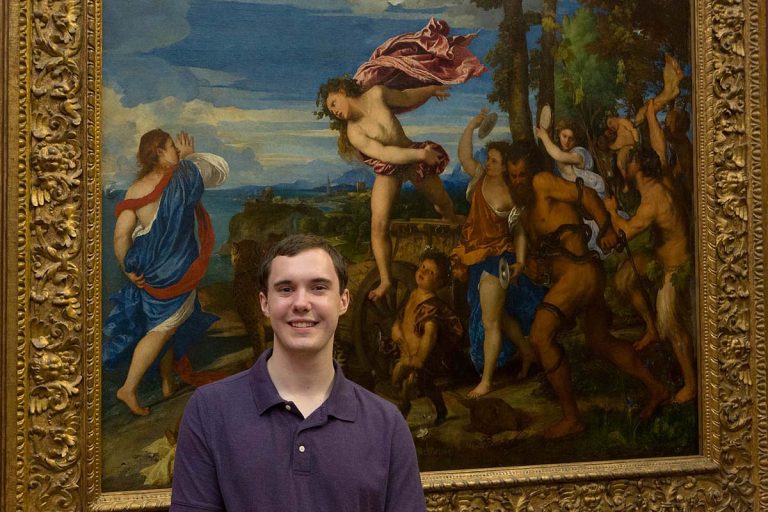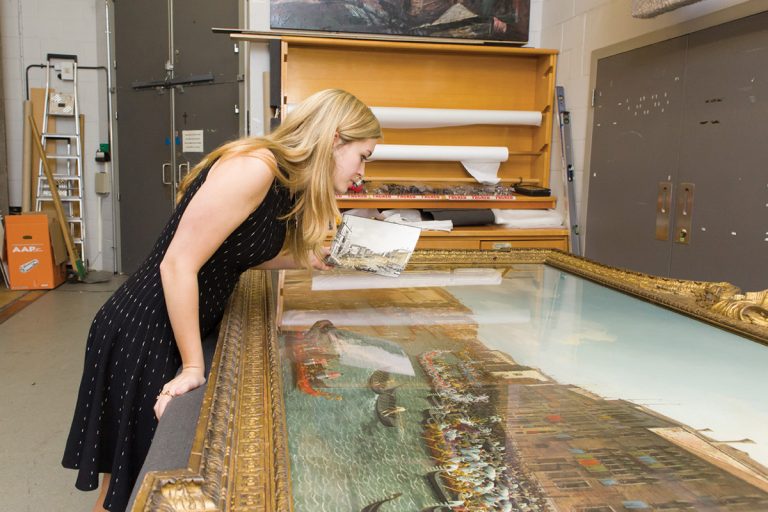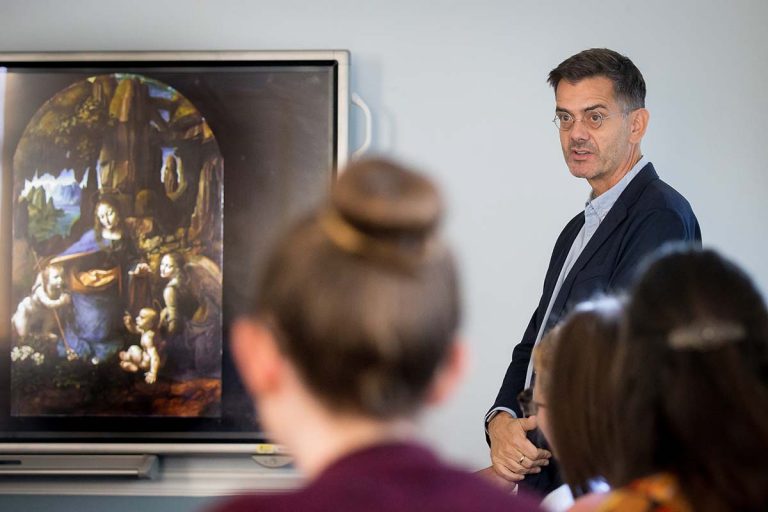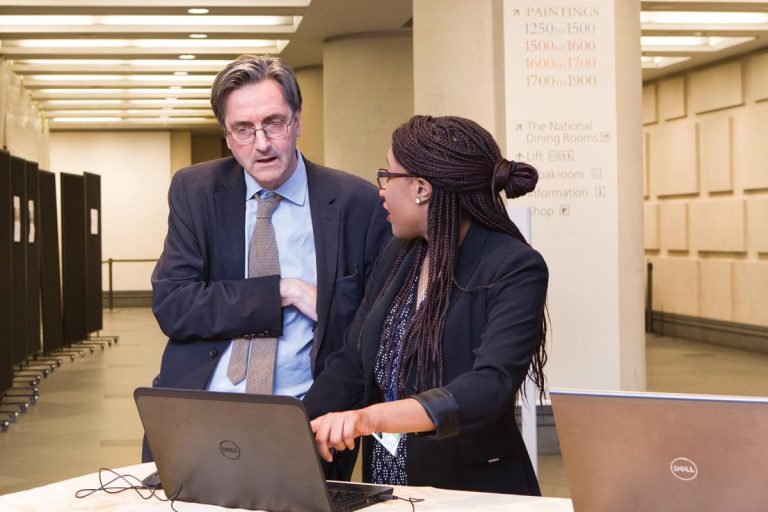Art History & Studio Art
Randolph College has rich tradition of creating, curating, collecting, studying, and celebrating art.
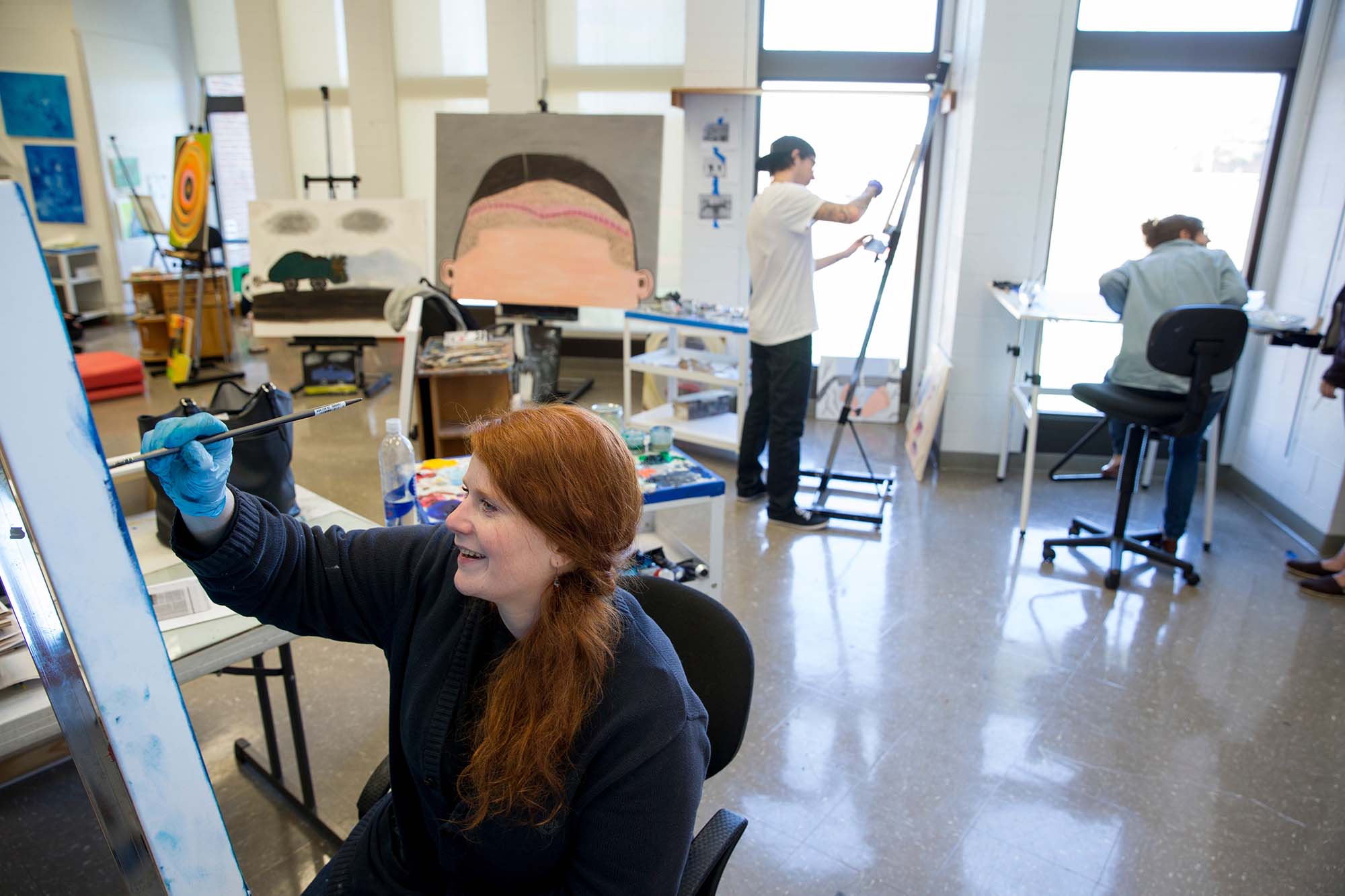
Why Study Art and Art History at Randolph?
Randolph College offers bachelor’s degrees in Art History and Studio Art, as well as a BFA in Studio Art. Students may also major and minor in Museum and Heritage Studies.
Visual literacy is critical to understanding our increasingly complex world and its images. Courses in the department provide a framework for the study of art through knowledge of its principles and history and through creative studio work, helping students develop critical and creative skills that prepare them for the demands of a changing marketplace.
Our graduates are equipped for a variety of professional options after graduation and have stepped immediately into jobs in animation, graphic design, teaching, and fashion design, as well as gallery work and numerous positions in museums.
Many have gone on to graduate degree programs in architecture, art history, art therapy, museum studies, museum education, architectural preservation, and studio art.
Degrees offered
BA in Art History
BA in Studio Art
BFA in Studio Art
Minor in Art History
Minor in Studio Art
Related Programs
Program Overview
Visual literacy is critical to understanding our increasingly complex world and its images. Courses in the department provide a framework for the study of art through knowledge of its principles and history and through creative studio work, helping students develop critical and creative skills that prepare them for the demands of a changing marketplace.
In addition to stepping into jobs in a variety of fields, graduates have also gone on to degree programs in architecture, art history, art therapy, studio art, architectural preservation, and museum studies.
A place to create
Imagine the inspiration of working in a studio with high ceilings and a glass wall providing a spectacular mountain view.
Or the connection with nature you get working in a painting studio that includes decks, terraces, and porches overlooking the Mabel K. Whiteside Greek Theatre (an outside natural theatre designed after the original Greek theatres).
Whether you’re painting, printmaking, or drawing, you’ll find that Randolph offers you outstanding facilities in which to create.
As a senior, you will have your own dedicated studio space available to you 24/7.
The Maier Museum of Art at Randolph College
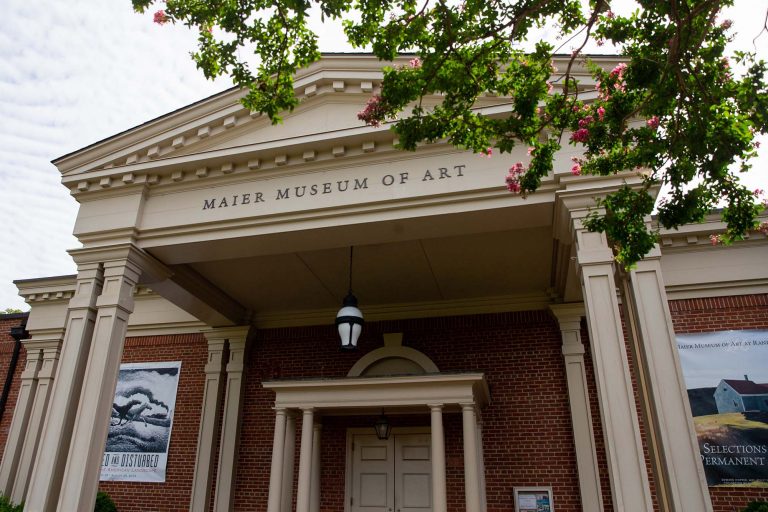
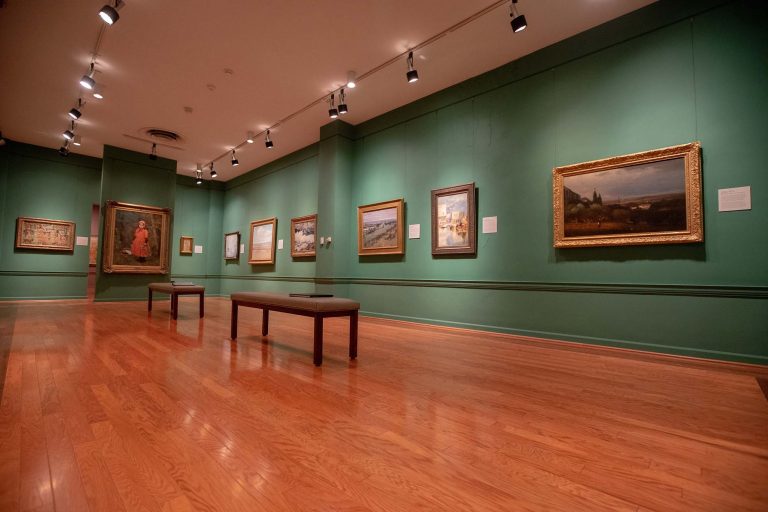
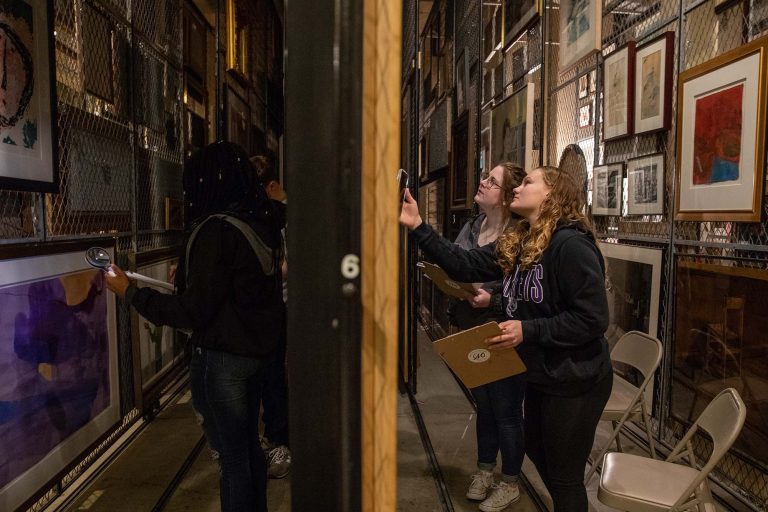
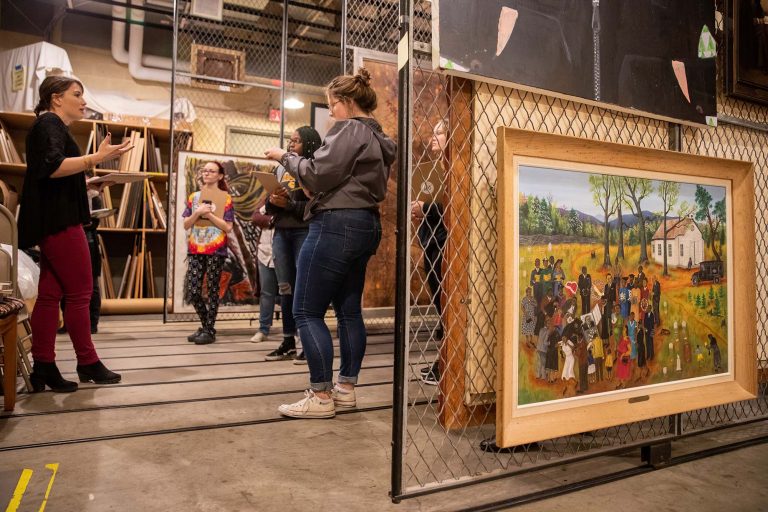
A World Class Resource - Right on Campus
Students have access to The Maier Museum of Art at Randolph College, which features work by American artists of the 19th, 20th, and 21st centuries.
Art history students learn curatorial skills and get behind the scenes to work with the College’s remarkable collection of several thousand paintings, prints, drawings, and photographs.
The Museum hosts an active schedule of special exhibitions and education programs throughout the year, as well as internships, museum studies practicums, and class visits.
Learn more at www.maiermuseum.org.

Why Randolph
“My internship and job at the Maier Museum of Art gave me priceless experience that I use on a daily basis. It is where I got a year’s worth of hands-on experience in a museum, as well as where I conducted my research for the VAM conference at which I presented my research. It was at this conference that I met museum professionals with whom I networked until I got my internship at the Fredericksburg Area Museum."
Unique Experiences
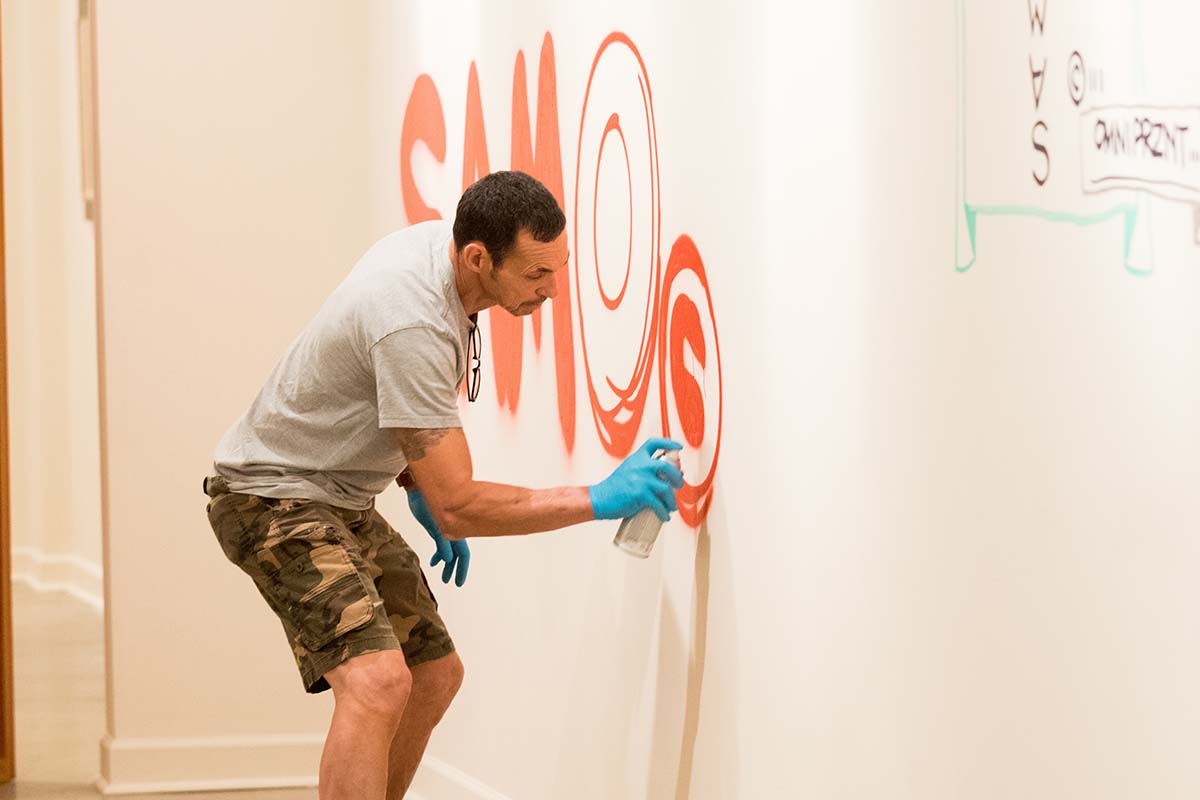
The Department maintains an active program of visiting artists and art historians who lecture on their work and offer workshops, critiques, or seminars for students.
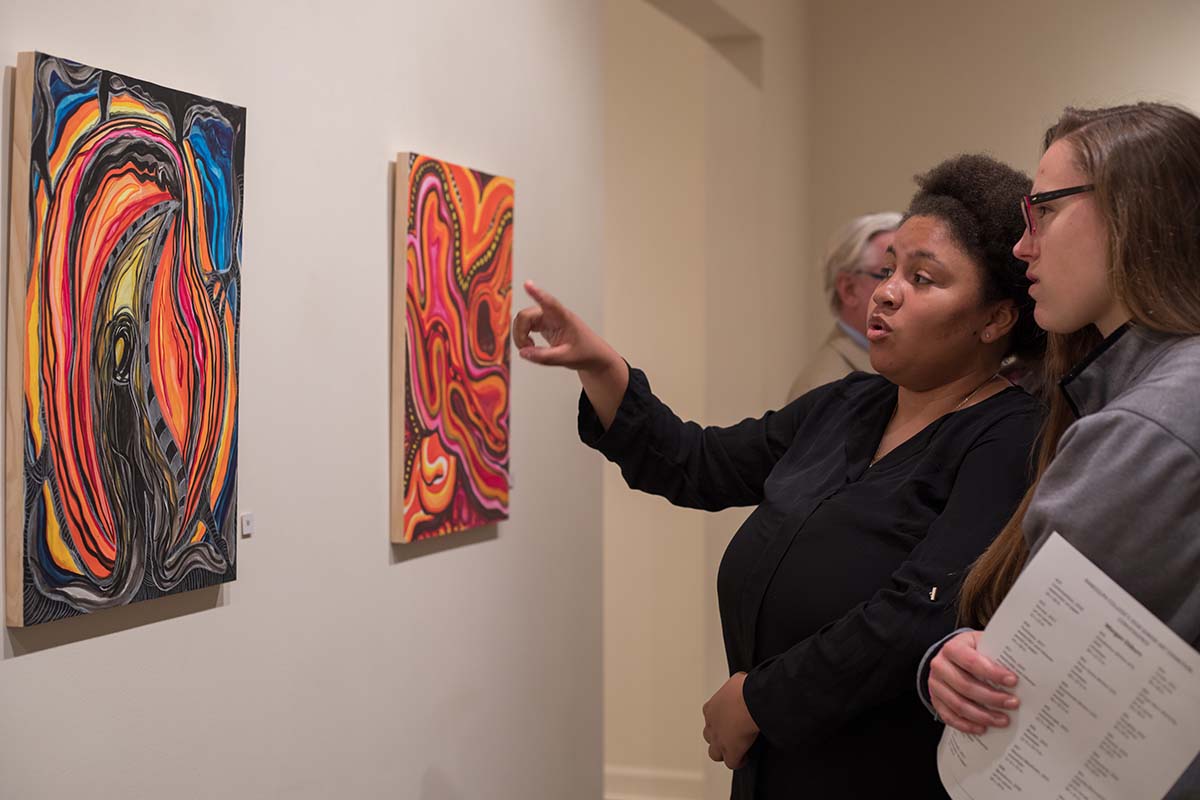
The senior experience culminates in a formal show of studio majors’ work and a presentation of research by art history majors at the Maier Museum of Art at Randolph College.
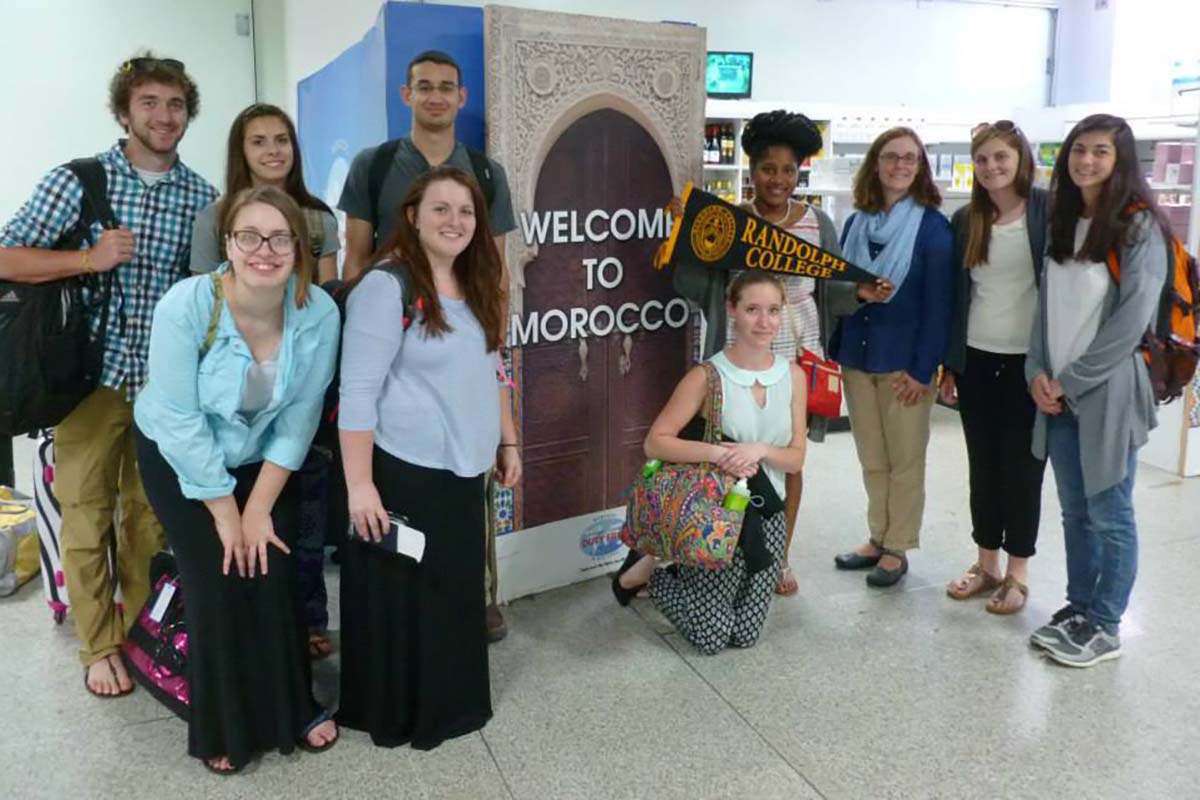
Randolph faculty members lead 2-week study seminars across a range of academic disciplines and in countries around the globe either during winter break, spring break, or the summer. Recent trips have sent art students to Morocco, Spain, France, and Italy.
The National Gallery, London
A One of a Kind Partnership
Randolph is the only college or university in the United States that offers an internship at the National Gallery of Art, London.
Two students spend eight weeks of the summer learning museum work at one of the world’s greatest painting collections.
The partnership also brings high-level staff members of the National Gallery to campus for lectures and master classes with Randolph students.
Learn more about the National Gallery, London internship program.
Art Department Faculty
Art is Everywhere
The celebration of art is a tradition at Randolph. Works by our alumni, faculty, and staff can be found throughout the campus – in the halls, public spaces, private offices, classrooms, on the front of buildings, secret gardens, and places you’d least expect. Someday your creation may join them.
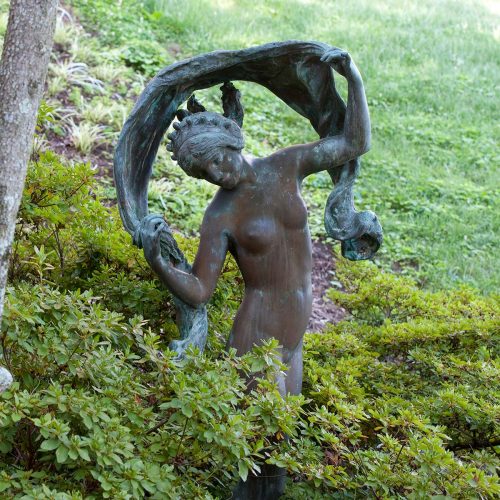
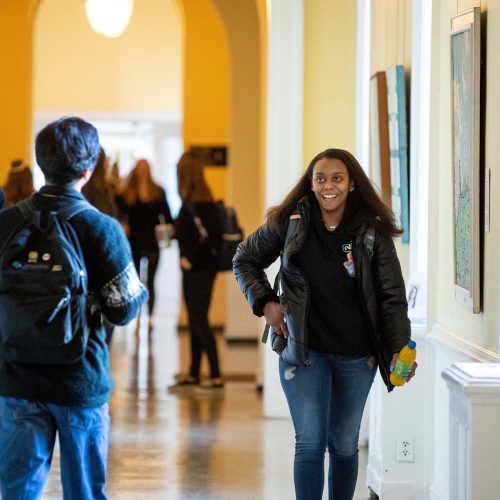

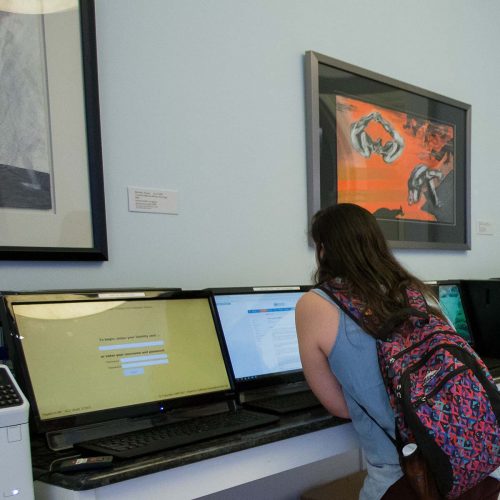
In the News
A’Nyeja Adams ’22 named Academy Center of the Arts’ new curator
Adams curates exhibitions, works directly with artists, and shapes how their work is experienced by the public.
Read MoreRandolph student takes advantage of opportunities for hands-on experience in the art field
Elizabeth Bailey '25 got a taste of independent research over winter break when she visited the United Kingdom to research the life of Welsh artist Gwen John for her senior project.
Read MoreNomadic Art: Ann Holsberry ’65 returns to alma mater for exhibition of art
Museum and heritage studies students joined Holsberry and Maier staff to help hang the exhibit and create a site-specific installation, on view through June 1.
Read MoreArt professor Chris Cohen granted tenure
Cohen joined the faculty in 2019 after about a decade as an adjunct in the College’s art department.
Read MoreAnn Holsberry ’65 works with students ahead of Maier solo exhibition
“Ann Holsberry: Navigating Sea and Stars” opens Sunday, with the artist's lecture at 2 p.m.
Read MoreLead curator of the National Gallery, London, to speak at Randolph College
Susanna Avery-Quash will discuss activities celebrating the National Gallery’s bicentenary this year, as well as a recent exhibition she curated there.
Read More33rd Annual Berlind Symposium set for Oct. 26
The program is inspired by the College’s 113th Annual Exhibition of Contemporary Art, "Vita Wild: Contemporary Wildlife Art."
Read MoreA’Nyeja Adams ’22 named Academy Center of the Arts’ new curator
Adams curates exhibitions, works directly with artists, and shapes how their work is experienced by the public.
Read MoreRandolph student takes advantage of opportunities for hands-on experience in the art field
Elizabeth Bailey '25 got a taste of independent research over winter break when she visited the United Kingdom to research the life of Welsh artist Gwen John for her senior project.
Read MoreNomadic Art: Ann Holsberry ’65 returns to alma mater for exhibition of art
Museum and heritage studies students joined Holsberry and Maier staff to help hang the exhibit and create a site-specific installation, on view through June 1.
Read MoreArt professor Chris Cohen granted tenure
Cohen joined the faculty in 2019 after about a decade as an adjunct in the College’s art department.
Read MoreAnn Holsberry ’65 works with students ahead of Maier solo exhibition
“Ann Holsberry: Navigating Sea and Stars” opens Sunday, with the artist's lecture at 2 p.m.
Read MoreLead curator of the National Gallery, London, to speak at Randolph College
Susanna Avery-Quash will discuss activities celebrating the National Gallery’s bicentenary this year, as well as a recent exhibition she curated there.
Read More33rd Annual Berlind Symposium set for Oct. 26
The program is inspired by the College’s 113th Annual Exhibition of Contemporary Art, "Vita Wild: Contemporary Wildlife Art."
Read More